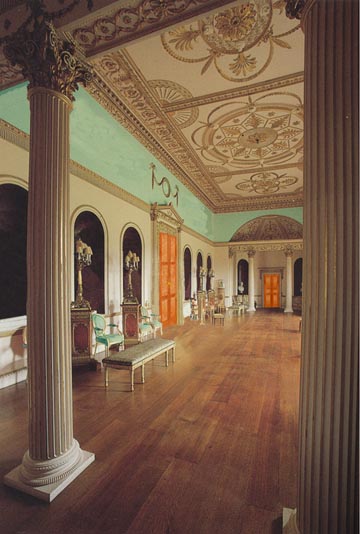The Saloon |
|
|
|
| Can everyone hear me over the
band? Oh good, they’re taking a break. Good job, lads. Here we are in the Saloon. It’s decorated in the Corinthian order, highlighting its symbolic importance in the house. Apparently eating and looking at art were really important to people in the past. Course they still are today, really, except now people's view of art is rubbish like women's knickers strung across a field or boards painted red. The room’s gold and white décor is of French inspiration, and fits alongside a beautiful sky blue. Like Emma’s eyes, I think, and I’ve always liked this room. The fluted columns, of finely carved hardwoods painted white, are highlighted with gold gilding, as are the capitols and much of the decorative woodwork through the room. The floor is of polished oak, whilst the doors are mahogany. This room originally contained marble statues of classical figures in each of the six niches against the north wall, but these were sold in the early 1990s to cover costs of upkeep. The ceiling in this room is a copy of one at Syon House, executed by Robert Adam. Indeed, much of this room resembles a simplified version of the dining room of that Great House. In the eighteenth century, Saloons were used as showcases for wealthy families, who positioned great works of art, both sculptural and painted, on walls and in niches within them. As you saw, Ann and Simon have put the few works of art in their possession in the dining room instead. We don’t use this room much. Oh, mind your head; here comes the blimp. If you’ll just step on through the west door, we’ll be in the breakfast room. |
